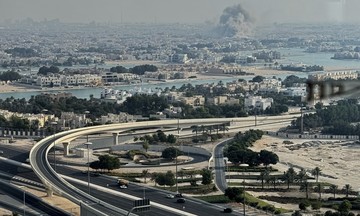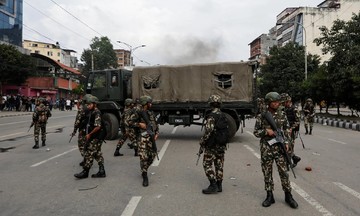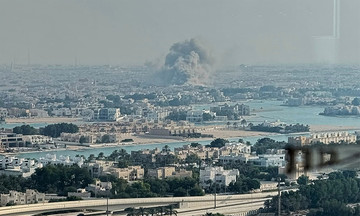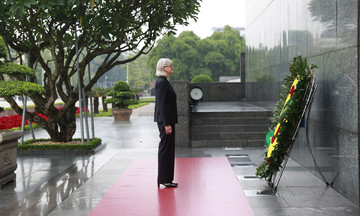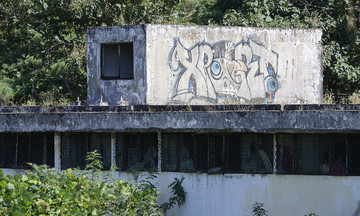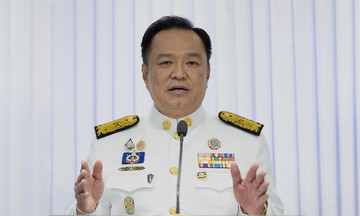As reservoir water flowed into the Grand Ethiopian Renaissance Dam's turbines on 9/9, Ethiopians celebrated, watching the televised inauguration ceremony on large screens across Addis Ababa and dancing to traditional music.
"We will have enough electricity from the new dam to charge our electric vehicles," Belay Tigabu, a bus driver at Addis Ababa's largest bus station, said.
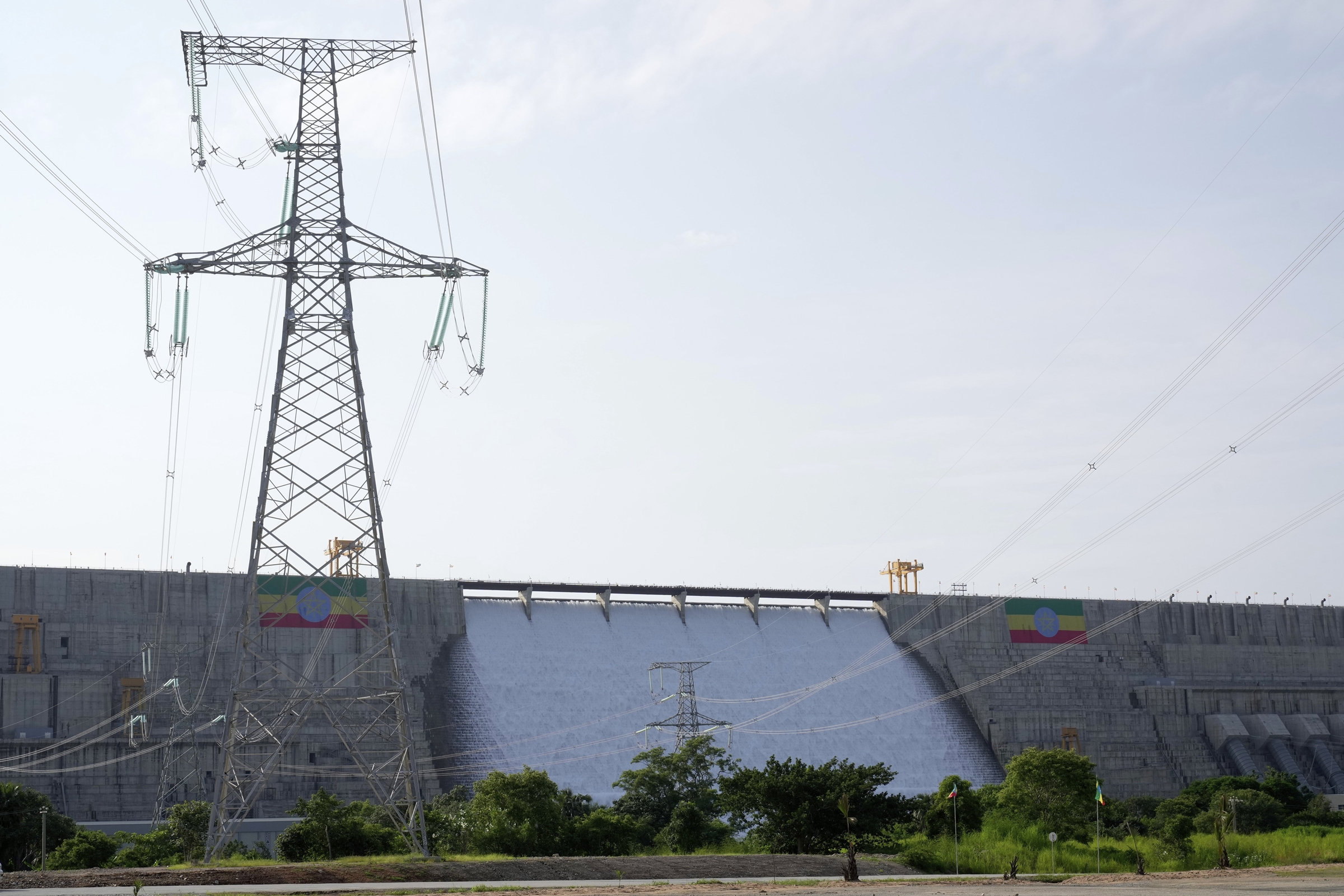 |
The Grand Ethiopian Renaissance Dam in Benishangul-Gumuz, Ethiopia, on 9/9. Photo: AP |
The Grand Ethiopian Renaissance Dam in Benishangul-Gumuz, Ethiopia, on 9/9. Photo: AP
Yabsira Misganw, a 20-year-old university student promoting a new online shopping app, said the dam "will provide stable electricity and improve online services."
According to Ethiopian officials, the nearly 5 billion USD dam, located on the Blue Nile tributary near the border with Sudan, will produce over 5,000 megawatts of electricity, doubling the nation's power capacity. This project will boost the economy, end frequent power outages, and support the growing use of electric vehicles in a country that has banned the import of gasoline-powered cars.
Speaking at the inauguration, Ethiopian Prime Minister Abiy Ahmed declared the dam a "major achievement," demonstrating to the world what Africans can accomplish. Dozens of African heads of state and government attended the ceremony with Abiy, many interested in importing electricity from Ethiopia.
"I am proud to announce that we will soon sign an agreement with the Ethiopian government to purchase electricity from the dam, benefiting our hospitals and schools," South Sudan President Salva Kiir said.
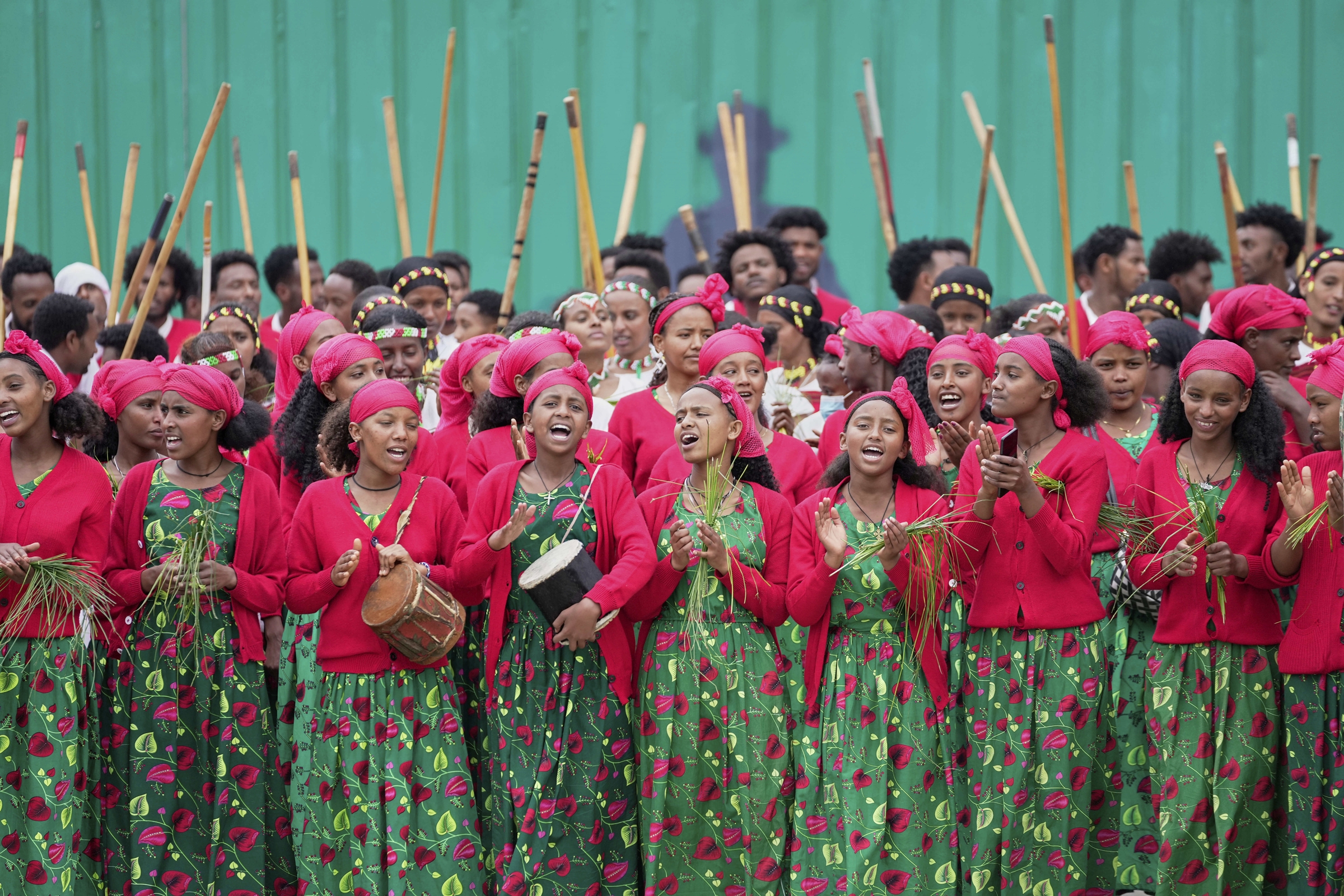 |
Ethiopian women in traditional attire sing and dance in the streets during the inauguration of the Grand Ethiopian Renaissance Dam on 9/9. Photo: AP |
Ethiopian women in traditional attire sing and dance in the streets during the inauguration of the Grand Ethiopian Renaissance Dam on 9/9. Photo: AP
Kenyan President William Ruto said he is seeking a power purchase agreement with Ethiopia based on a "pan-African declaration."
Kenya has long purchased electricity from Ethiopia. According to Ruto, the dam exemplifies Africa's ability to build large, ambitious projects, aligning with the African Union's goal of energy connectivity.
However, neighboring Egypt has consistently opposed the project, fearing it will reduce downstream Nile water flow. Egypt relies almost entirely on the Nile for irrigation and drinking water for over 100 million people.
Tamim Khallaf, a spokesperson for the Egyptian Ministry of Foreign Affairs, declared the dam an "existential threat," built "without prior notification, consultation, or agreement with downstream countries, in serious violation of international law."
Prime Minister Abiy reassured neighboring countries that Ethiopia does not intend to harm them and that the dam will bring shared prosperity.
"I assure you that Ethiopia will never take away your share," he said. "Today, I make this promise before my people. The concern of our brothers in Egypt, in Sudan, or anywhere else, is also our concern. We must share and grow together, for we have no intention of harming anyone."
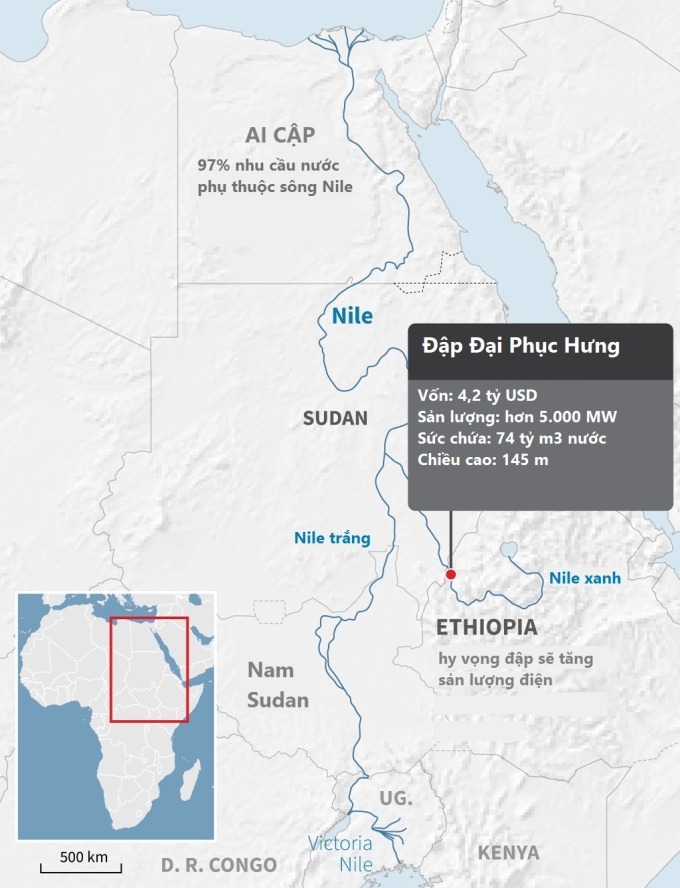 |
Location of the Grand Ethiopian Renaissance Dam. Graphic: AFP |
Location of the Grand Ethiopian Renaissance Dam. Graphic: AFP
Hong Hanh (According to AP)



